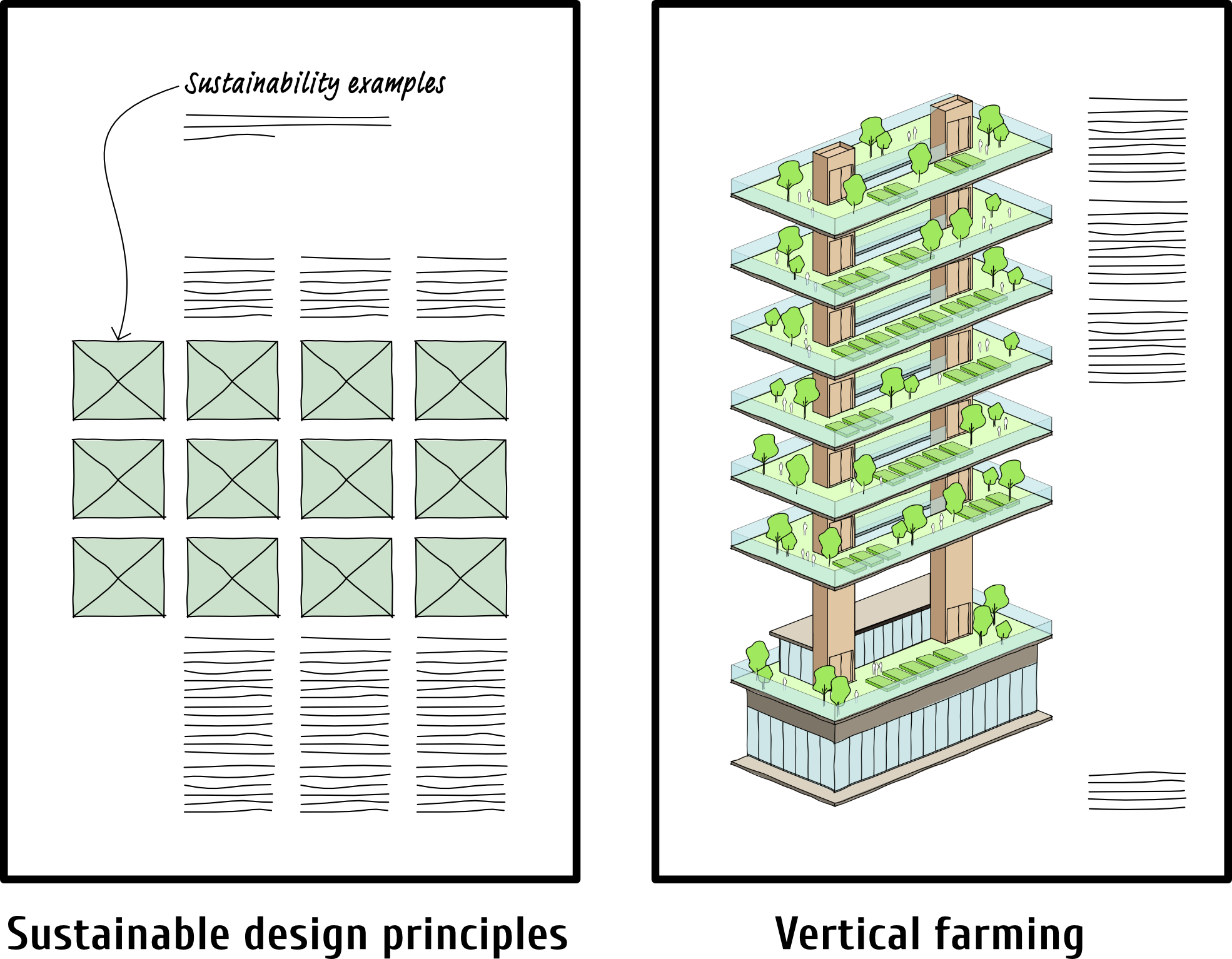10 Best Architecture Concepts for Urban Design
What is Urban Design?
Urban design needs to be adaptive and responsive to the city's ever-evolving needs. Contemporary urban architecture must be a positive force for the constant changes within a city.
Some important opportunities and constraints architects are faced with when designing urban architecture are;
Shifts in social values and economic circumstances change the occupational requirements in architectural spaces.
Rise in temperature and cold weather bursts require a building's performance to be equipped for extreme environmental conditions.
Rapid advancements in technology call for adaptable infrastructure that can accommodate the latest sustainability methods.
To help you design an architecture concept that will thrive in the rugged and diverse urban landscape, we have created a list of the ‘10 Best Architecture Concepts for Urban Design’.
By applying some of these ideas, your architecture concept will promote social interaction, economic prospects and environmental sustainability. While also striking a balance between architecture, landscape, urban planning, aesthetics, spatial planning, connectivity and sustainable strategies.
Scroll to the bottom to download our Architecture Concepts for Urban Design Checklist PDF for FREE
Summary of ‘10 Best Architecture Concepts for Urban Design’
Rainwater harvesting
Green Walls and Green Roofs
Mixed-Use Development
Pedestrian-Friendly Design
Adaptive Reuse
Public Spaces
Green Spaces and Urban Parks
Smart Cities and Technological Integration
Sustainable Architecture Design Principles
Vertical farming
10 Architecture Concepts for Urban Design
1. Rainwater harvesting
Rainwater harvesting is a sustainable urban design concept as it takes advantage of the natural conditions in which your architecture is placed. The collection of rainwater can be used in a building's grey water system, which lowers the demand for fresh water supply and increases self-sufficiency.
2. Green Walls and Green Roofs
Utilising Green Walls and Green Roofs are extremely beneficial for urban design as they increase sustainability and attractiveness. Providing a space for vegetation to flourish through green walls and green roofs can assist in sustainability, as the vegetation cleans the air. This lowers pollution and simultaneously provides a habitat for wildlife in a space that otherwise would be void. Green Walls and Green Roofs also create an aesthetically pleasing environment that can aid in creating attractive urban spaces.
3. Mixed-Use Development
Mixed-use developments are in increasing demand within cities due to their diverse nature. The advantages of mix-use architecture concepts are that they appeal to a wide range of different users and needs while providing a sense of community.
4. Pedestrian-Friendly Design
Encouraging pedestrian-friendly design within an architectural concept improves the street life within a city. Providing rich green spaces, vehicle-free zones, and cycle routes improves the spatial quality of place and promotes a healthier lifestyle.
5. Adaptive Reuse
Adaptive reuse involves modernising existing buildings for new uses while preserving their historic and architectural significance. This approach conserves historic architecture while giving purpose to old buildings. The juxtaposition of classical architecture combined with contemporary architecture celebrates cultural heritage and breathes new life into a city.
6. Public Spaces
Creating public spaces has also been an extremely important aspect of urban design, such as the Renaissance ‘public square’. Social activity can thrive in these pockets of space when intelligently designed. To create a social community-driven atmosphere, you must thoughtfully design the architecture that defines a public space.
7. Green Spaces and Urban Parks
An urban design with green spaces contributes to the overall health of urban communities by providing access to nature and outdoor activities. Architecture concepts that include green spaces such as parks, gardens, and urban forests provide numerous benefits to a city, including improved air quality, enhanced biodiversity, and opportunities for recreation and relaxation.
8. Smart Cities and Technological Integration
Smart cities and buildings employ cutting-edge technology and data analysis to improve efficiency, sustainability, and quality of life for residents and occupants. From smart transportation systems to energy-efficient buildings, technological innovations are transforming the way cities are planned, built, and managed.
9. Sustainable Architecture Design Principles
Sustainable architecture is a core principle of urban design. The architecture you create needs to be responsive to the surrounding site and take advantage of the environment’s natural conditions to maximise eco-friendly performance. Conducting a site analysis is the first step in understanding the environmental opportunities and constraints. Harnessing the site's natural energy is a great way to minimise the carbon footprint of an urban design. Find out more sustainable architecture methods here
10. Vertical farming
Urban agriculture is becoming an ethically important component of urban design concepts. Vertical farming is a popular method of urban agriculture as it is space-efficient, optimising the characteristics of an urban setting. Architecture concepts that include vertical farming provide sustainable food production for a city, as it decreases the reliance on imports.
Conclusion
In conclusion, well-considered architectural concepts play a crucial role in shaping urban design and impacting the way cities evolve and function.
By employing architectural concepts such as sustainable urban design, mixed-use developments, and placemaking, cities can create more sustainable, inclusive, and community-driven urban environments that meet the needs of present and future generations.
FAQs relating to Architecture Concepts for Urban Design
-
Sustainable architecture minimizes the carbon footprint of a building and increases the overall sustainability and self-sufficiency of the urban environment and communities.
-
Architecture concepts can improve walkability in a city by investing in infrastructure improvements, implementing traffic calming measures, and prioritising pedestrian safety in urban planning initiatives.
-
Smart cities and buildings leverage technology and data to improve sustainability, efficiency, and quality of life for residents, creating more cohesive, sustainable, and livable urban environments.oes here
What else would you include for ‘ideas for architecture concepts’?
We’d love to hear your thoughts… comment below!




